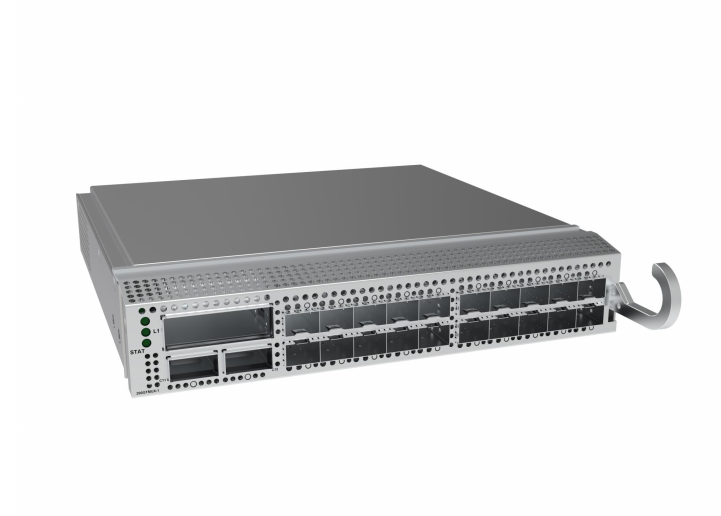To meet the needs of enterprises for multi-service support and users for high-quality network experiences across geographies, data centers are no longer “islands”; they need to be interconnected to share or back up data and achieve load balancing. According to the market research report, the global data center interconnection market is expected to grow to 7.65 billion US dollars in 2026, with a compound annual growth rate of 14% from 2021 to 2026, and data center interconnection has become a trend.
Second, what is data center interconnection
Data Center Interconnect (DCI) is a network solution that enables cross-data centers to communicate with each other. It features flexible interconnection, high efficiency, security, and simplified operation and maintenance (O&M), meeting the requirements for efficient data exchange and disaster recovery among data centers.
Data center interconnection can be classified according to data center transmission distance and network connection method:
According to the transmission distance:
1) Short distance: within 5 km, general cabling is used to realize the interconnection of data centers in the park;
2) Medium distance: within 80 km, generally refers to the use of optical modules in adjacent cities or medium geographical locations to achieve interconnection;
3) Long distance: thousands of kilometers, generally refers to optical transmission equipment to achieve long-distance data center interconnection, such as submarine cable network;
According to the connection method:
1) Network layer three interconnection: the front-end network of different data centers accesses each data center through the IP network, when the primary data center site fails, the data that has been copied to the standby site can be recovered, and the application can be restarted within a short interruption window, it is important to protect these traffic from malicious network attacks and always available;
2) Layer 2 network interconnection: Building a large Layer 2 network (VLAN) between different data centers mainly meets the requirements of virtual dynamic migration of server clusters. The following factors should be considered:
Low latency: Layer 2 interconnection between data centers is used to implement remote VM scheduling and cluster remote applications. To achieve this, the latency requirements for remote access between VMS and cluster storage must be met
High bandwidth: One of the core requirements of data center interconnection is to ensure VM migration across data centers, which puts higher requirements on bandwidth
High Availability: One of the most effective ways to improve availability is to design backup links to support business continuity
3) Storage network interconnection: Data replication between the primary center and the disaster recovery center is realized by means of transmission technologies (bare optical fiber, DWDM, SDH, etc.).
Third, how to achieve data center interconnection
1) MPLS technology: The interconnection scheme based on MPLS technology requires that the interconnection network between data centers is the core network for deploying MPLS technology, so that the direct layer 2 interconnection of data centers can be completed directly through VLL and VPLS. MPLS includes Layer 2 VPN technology and Layer 3 VPN technology. VPLS protocol is Layer 2 VPN technology. Its advantage is that it can easily implement the deployment of metro/wide area network, and it is deployed in many industries.
2) IP tunnel technology: It is a packet encapsulation technology, which can realize the heterogeneous network layer 2 interconnection between multiple data centers;
3) VXLAN-DCI tunnel technology: Using VXLAN technology, it can realize Layer 2 / Layer 3 interconnection of multi-data center networks. Based on the current technology maturity and business case experience, VXLAN network is flexible and controllable, secure isolation, and centralized management and control, which is suitable for the future scenario of multi-data center interconnection.
4. Data center interconnection solution features and product recommendations
Scheme features:
1) Flexible interconnection: Flexible interconnection mode, improve network flexibility and scalability, to meet the Internet access, distributed deployment of data centers, hybrid cloud networking and other convenient flexible expansion between multiple data centers;
2) Efficient security: DCI technology helps optimize cross-data center workloads, share physical and virtual resources across regions to optimize data workload, and ensure the effective distribution of network traffic between servers; At the same time, through dynamic encryption and strict access control, the security of sensitive data such as financial transactions and personal information is guaranteed to ensure business continuity;
4) Simplify operation and maintenance: Customize network services according to business needs, and achieve the purpose of simplifying operation and maintenance through software definition/open network.
HUA6800 – 6.4T DCI WDM transmission platform
The HUA6800 is an innovative DCI transmission product. The HUA6800 has the characteristics of small size, ultra-large capacity service access, ultralong-distance transmission, simple and convenient operation and maintenance management, safe operation, energy saving and emission reduction. It can effectively meet the requirements of long-distance, large-bandwidth Requirements for interconnection and transmission of user data centers.
The HUA6800 adopts a modular design, which not only supports photoelectric decoupling to reduce costs, but also supports integrated management of photoelectricity in the same frame. With SDN function, it creates an intelligent and open network architecture for users, supports the YANG model interface based on the NetConf protocol, and supports various management methods such as Web, CLI, and SNMP, and facilitates operation and maintenance. It is suitable for core networks such as national backbone networks, provincial backbone networks, and metropolitan backbone networks, and data center interconnection, meeting the needs of large-capacity nodes above 16T. It is the most cost-effective transmission platform in the industry. It is an interconnection solution for IDC and Internet operators to build large-capacity data centers.
Post time: Mar-28-2024


